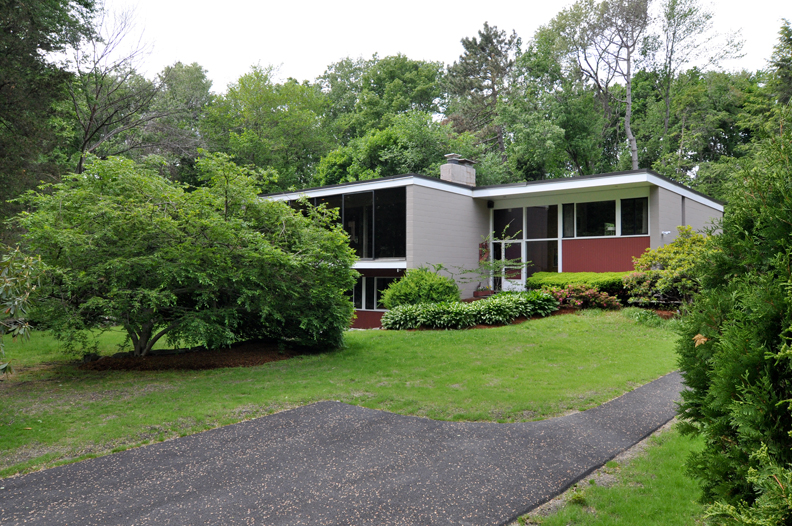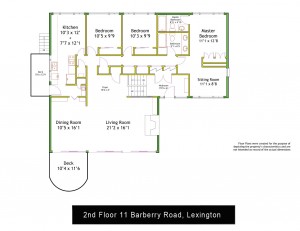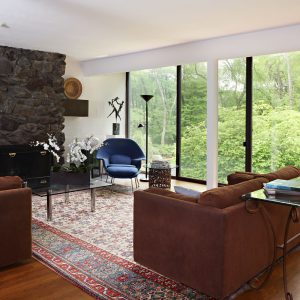
Click any photo to enlarge:
[slideshow caption=”on”]
Photos by Lara Kimmerer (interior) and John Tse (exterior)
(Sale pending) We are thrilled to offer this listing of a classic Five Fields TAC (The Architects’ Collaborative) house, the first time this house has been available since it was designed and built in 1953. Expanded since, it strikes a remarkable profile from the road. Dick Morehouse was the principal architect, though the original “Maxipac” design is said to have been designed by Walter Gropius himself. The style was the only in Five Fields to use concrete block walls, exposed inside and out, an International Style hallmark. Only two others were built in the style in the neighborhood. The house is sited thoughtfully on a lush 3/4-acre lot bordering the common land that leads to the neighborhood pool, just past the classic stone walls of the original Cutler farm.
- 5-6 Bedrooms
- 3 full baths, including an en suite master
- 3075 s.f. of living area
- 2 fireplaces, the living room custom built from fieldstone reclaimed from the site
- 2 decks
- Central air in the addition wing
- Large eat-in kitchen
- Fantastic light, south-facing, walls of glass
- Artist studio or family room on first floor
The Neighborhood
The below is taken from our history of Five Fields, which is included in an overview of the modernist communities found in Lexington, here at this page (includes a video tour of Five Fields, Moon Hill, and Peacock Farm).
While the houses of Six Moon Hill were mainly built as a community to house the highly collaborative TAC partners and associates themselves (Bauhaus and TAC founder, Walter Gropius, built his own famous house out in the nearby town of Lincoln), the architects also conceived of their next such development of spec houses to sell to other home buyers and chose a farm on the southwestern part of town. The old Cutler Farm was purchased by the TAC and the young firm moved forward on their conception of a development that they would control from beginning to end. This became the neighborhood known as Five Fields.
One of the original eight TAC partners, Dick Morehouse, who was a resident of Moon Hill, oversaw the project and even acted as a salesman, showing the new homes to interested buyers.
The project was conceptualized as 68 house sites, though the initial phase consisted of 20 houses built in 1951, 1952, and 1953, the sales of which would finance the rest of the project. The original price points of these homes—some of which now fetch close to $2 million– ranged from about $18,000-35,000.
“For twenty years after the establishment of the neighborhood, TAC approval had to be obtained for additions. The restriction expired in the early 1970s. Today, almost all of the houses have been modified or added onto over the years, obscuring what was originally a neighborhood of houses built as variations on a few standard plans.” (See link to source, below).
As one of the other original partners, Chip Harkness, explained to the Boston Globe a number of years ago, describing the goals of the TAC when they set out to build Moon Hill, “An initial goal was low-income housing. We were shooting to build homes for under $15,000. That’s quite a bit less than the $1 million one of the houses recently went for.” Like Moon Hill, form followed function in the design of the Five Fields houses, the homes were sited sympathetically into their surroundings and the existing contours of the land, and there was common land set aside and a swimming pool, a playground with playing fields, and a skating pond, for the community. This community spirit carries on today in both Moon Hill and Five Fields.
A boy jumps into the Five Fields swimming pool, from the commemorative book, Five Fields — Five Decades: A Community in Progress.
More can be read here, at the page for Five Fields on the town of Lexington’s Historic Survey site.







